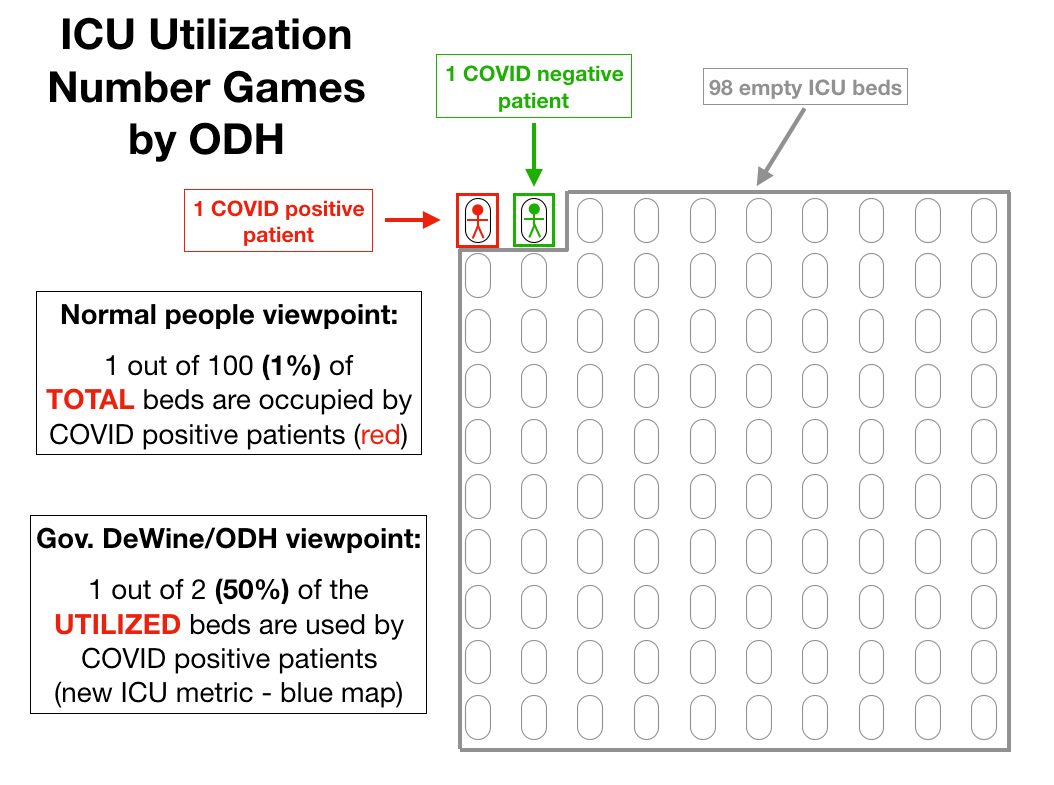
- Numbers have meaning. -
They don't just come from the ether. In Ohio (and many other places now) we are again focused on easily manipulated 'cases' and more specifically the now all-important 'cases per 100,000.'
They don't just come from the ether. In Ohio (and many other places now) we are again focused on easily manipulated 'cases' and more specifically the now all-important 'cases per 100,000.'
Governor DeWine likes to say that it's a standard metric that they've been using all along (though I've noticed of late he no longer tries to tie it directly to the CDC's usage anymore, hmmmm) And it is a standard metric for the CDC. But not how it it being used in this instance.
This metric has been used for a long time for tracking the flu, and indeed, 50 cases/100,000 is the standard 'epidemic level' but what Gov. DeWine does not tell us is that it **matters how long we count for.**
Please watch the short attached clip to understand just how powerful messing around with this simple sounding number is.
facebook.com/15501424/video…
facebook.com/15501424/video…
What has ALSO not been emphasized enough is that this generally useful number for tracking flu activity is utterly worthless when we include ANY so-called asymptomatic cases. This is a measure of disease activity. If there is no actual disease, there is no activity to measure.
In the state of Ohio, we count 'probables' which include unverified antigen tests, symptomatic presentation and simply existing in certain cohorts (like being a college student, on- or off-campus, or living in long term care or even just being in a hospital).
We count over TWO full weeks, TWICE as long as the appropriate length for measuring activity for this disease AND we count 'cases' that do not cause disease with plenty of evidence that some significant number of those 'cases' are not infectious.
It *sounds* like we're using the proper epidemiological tools - but in reality there's nothing further from the truth.
#InThisTogetherOhio
#InThisTogetherOhio
• • •
Missing some Tweet in this thread? You can try to
force a refresh






